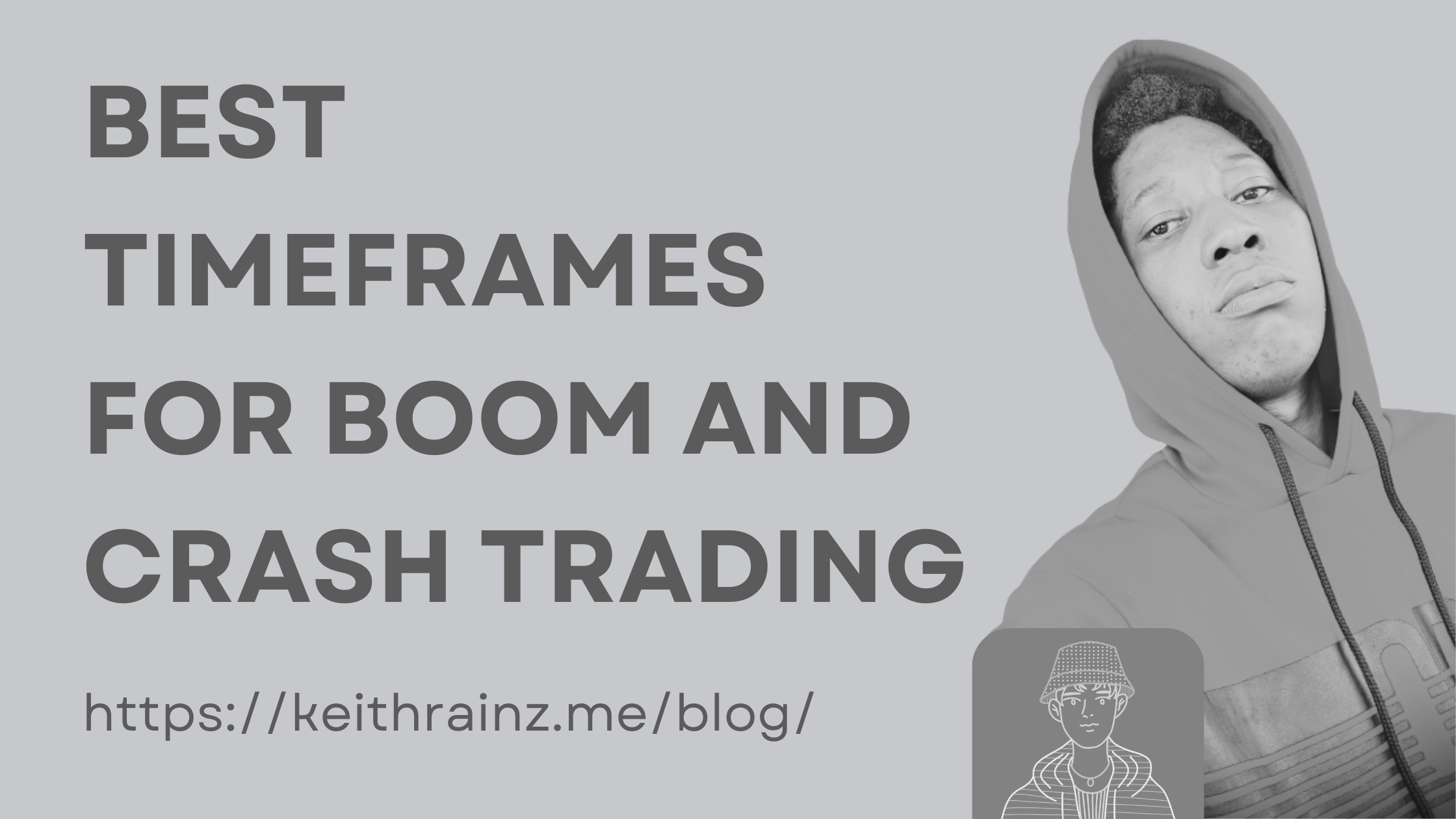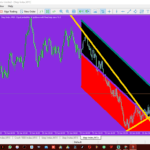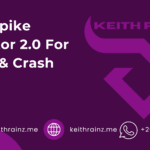When trading Boom and Crash indices, one of the most important factors for success is choosing the right timeframe. The timeframe you choose will dictate the type of analysis you perform, how long you hold trades, and the type of strategy that works best for you. Understanding the different timeframes available on the chart and how to use them effectively can make a significant difference in your trading results.
In this article, we will explore the best timeframes for Boom and Crash trading and provide you with insights into which timeframe works best for specific trading strategies.
Understanding Timeframes in Boom and Crash Trading
A timeframe is the duration for which each candlestick (or bar) represents price movement on a chart. A short timeframe like 1-minute (M1) displays each candlestick’s price action over a minute, while a longer timeframe like 1-hour (H1) displays the price movement over an hour.
In Boom and Crash trading, timeframes play a crucial role because they determine how much detail you can see in the market. Short timeframes give you a detailed view of small price movements, while longer timeframes provide a broader perspective of trends and reversals.
Types of Timeframes for Boom and Crash Trading
- Short Timeframes:
- 1-minute (M1)
- 5-minute (M5)
- 15-minute (M15)
- Medium Timeframes:
- 30-minute (M30)
- 1-hour (H1)
- 4-hour (H4)
- Longer Timeframes:
- Daily (D1)
- Weekly (W1)
Best Timeframes for Boom and Crash Trading
1. 1-Minute (M1) Timeframe: Best for Scalping
The 1-minute (M1) timeframe is ideal for scalpers who prefer making quick trades to capture small price movements. This timeframe is highly popular in the Boom and Crash markets due to the frequent spikes that occur, giving scalpers multiple opportunities to enter and exit trades quickly.
Why M1 is Effective for Scalping:
- Frequent price movements: The Boom and Crash indices are known for their sharp price movements, and the M1 timeframe shows these moves in detail, making it easier to capitalize on them.
- Quick entries and exits: Scalpers love M1 for its fast-paced nature. You can quickly spot spikes and reversals, giving you a chance to take advantage of small but frequent profits.
Strategy:
- Watch for sudden spikes (Boom or Crash) and wait for price to return to normal levels, entering quickly when the price reverses in your favor.
- Use tight stop-losses to minimize risk, as small fluctuations can cause quick losses in M1.
2. 5-Minute (M5) Timeframe: Ideal for Quick Trading
The 5-minute (M5) timeframe is slightly less volatile than the M1 but still offers plenty of opportunities for traders who like to make quick trades. It’s a good middle ground for those who want to avoid the erratic behavior of the M1 while still taking advantage of small price movements.
Why M5 Works for Boom and Crash:
- Clearer market patterns: The 5-minute chart smooths out some of the noise found in the M1 timeframe, providing more reliable signals for quick trades.
- More data to analyze: With a bit more time to analyze price movements, traders can use M5 to identify trends, reversals, and key support/resistance levels more clearly.
Strategy:
- Look for small retracements or pullbacks in the price after a spike. Enter a trade when you see a pattern forming, like a bullish engulfing in a pullback during an uptrend or a bearish engulfing in a pullback during a downtrend.
- Use moving averages or support/resistance levels for trend confirmation.
3. 15-Minute (M15) Timeframe: Best for Trend Traders
The 15-minute (M15) timeframe is ideal for those who prefer trading with the trend. It shows both short-term and medium-term price movements, which can help you identify more significant trends in the Boom and Crash markets. This timeframe offers a more stable view compared to the 1-minute and 5-minute charts.
Why M15 Works for Trend Traders:
- Clearer trend identification: In Boom and Crash, trends are typically more apparent on the 15-minute chart, making it easier to spot a strong move and follow it.
- Better risk-to-reward ratio: The 15-minute chart allows traders to plan entries and exits with a more balanced risk-to-reward setup.
Strategy:
- Identify the overall trend direction (up for Boom or down for Crash) and wait for a pullback to a support or resistance level. Enter when the price shows signs of continuation.
- Consider moving averages (e.g., 50-period or 200-period) to confirm the trend.
4. 1-Hour (H1) Timeframe: Ideal for Swing Traders
The 1-hour (H1) timeframe is great for swing traders who prefer to hold positions for a few hours or even days. This timeframe captures a broader view of market movements, making it useful for identifying major support/resistance levels and trading on higher timeframes.
Why H1 is Good for Swing Trading:
- Longer trend cycles: The 1-hour chart provides a better perspective on longer market trends, helping traders capture larger price swings.
- Less market noise: The H1 chart is less affected by small fluctuations, making it more reliable for identifying significant price movements and key support/resistance areas.
Strategy:
- Look for price to break through key support/resistance levels or confirm a reversal pattern.
- Use trendlines and RSI for trend confirmation and overbought/oversold signals.
5. 4-Hour (H4) Timeframe: Best for Long-Term Traders
The 4-hour (H4) timeframe is popular among traders who want to capture larger market moves over a longer period. This timeframe is typically used by traders who plan to hold trades for several hours or even a few days, depending on market conditions.
Why H4 is Effective for Longer-Term Moves:
- Larger price movements: The 4-hour chart shows more significant trends and is great for traders looking to capitalize on longer price swings.
- Clearer trend direction: It helps identify major support/resistance levels and trend direction more clearly than shorter timeframes.
Strategy:
- Look for price consolidations or key breakout points to enter the market.
- Use Fibonacci retracements to identify potential reversal zones during pullbacks.
Choosing the Right Timeframe for Your Trading Style
Choosing the right timeframe depends on your trading style, risk tolerance, and available time. Here’s a quick guide to help you select the best timeframe:
- Scalpers: If you prefer making quick trades and can actively monitor the market, M1 or M5 is ideal for you.
- Trend Traders: If you like to trade with the market trend and prefer to hold positions for a few hours, the M15 or H1 timeframe is a good fit.
- Swing Traders: For those who want to capture larger moves over a few days, the H1 or H4 timeframe is best.
- Position Traders: If you’re looking to trade with long-term trends and can hold positions for days or weeks, H4 or even D1 will be suitable.
Conclusion
The best timeframe for Boom and Crash trading depends on your trading style and goals. If you’re a scalper, shorter timeframes like M1 and M5 are ideal for quick entries and exits. For trend-following traders, M15 and H1 provide a good balance between trend identification and price action. Swing traders may prefer H1 or H4 for longer-term moves, while position traders might choose the 4-hour or daily chart for a broader view of market trends.
No matter which timeframe you choose, always remember to adjust your trading strategy to suit the timeframe you’re using. Test your strategies on demo accounts to find what works best for you, and ensure you practice good risk management.







